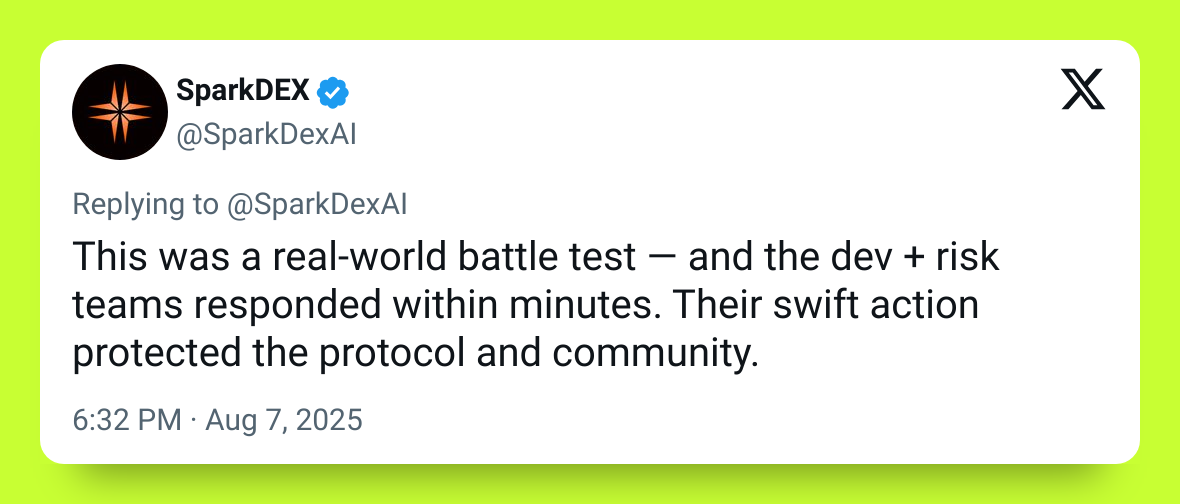
In a landmark moment for Web3 security, Hypernative’s real-time detection turned an attempted hack into an $85K loss for the attacker.
On Aug. 7, a familiar story in DeFi took an unfamiliar turn. A would-be exploiter lost $85K of their own funds in a failed $1.5M exploit attempt targeting SparkDEX on the Flare chain.
Flare has been a customer of Hypernative since March 2024, enhancing the protocol’s security through monitoring that spans bridges, contracts, wallets, and treasury flows. As part of that deal, Flare extended the security umbrella to key projects in the ecosystem, including SparkDEX.
Exploits are supposed to be asymmetric: low risk for the attacker, high cost for the victim. This reversal of fortune marks what may be the first documented case of an exploiter losing money while attempting to drain a DeFi protocol. It is direct proof that the combination of real-time security and rapid response can shift the balance of risk back onto the attacker.
Detection without trust is just noise. SparkDEX trusted our intelligence, acted within minutes, and showed how DeFi can move from damage control to making attackers pay.
Dan Caspi, Co-founder & CTO @Hypernative
The attempted exploit began at 3:56 AM UTC when the Hypernative platform flagged a contract deployment with a high maliciousness rating from our AI detection engine. A member on the monitoring team received an early wake-up call and immediately began to analyze the attack vector.
After deploying two additional contracts within minutes, the attacker created what appeared to be a coordinated attack infrastructure. Unbeknownst to them however, Hypernative had been working directly with the SparkDEX team to coordinate the response, leading quickly to the pause of the perpetuals protocol.
What happened next transformed this routine exploit attempt into a unique moment in DeFi. At the time of the SparkDEX pause, the hacker had just deposited more funds into the protocol for a follow-on attack. When the dust cleared, the attacker was down 3.8 million FLR tokens ($85K at the time).
With the attack successfully thwarted, the tension broke and the mood in the chat turned humorous. "This is going to be the best tweet ever. You guys should offer him 90% of the money back, while keeping 10% as the white hat bounty," one of Hypernative's security experts posted.
With Hypernative's help, SparkDEX managed to not only prevent a $1.5M loss, but also profit from the encounter. The team said it will use the seized funds for an immediate independent security audit and to buy back SPRK tokens.
The defense was about more than technology, it was about trust and speed. SparkDEX had Hypernative’s monitoring in place from day one, and when the alert hit, the team acted within minutes, pausing the perpetuals module while keeping the DEX running.
Flare quickly followed with new security measures, opening direct channels with major DeFi protocols and formalizing escalation paths with partners like Hypernative.

This incident reframes what effective security means in Web3. A few lessons can be distilled:
Most importantly, this case proves proactive defense is worth far more than reactive cleanup. When attackers lose money instead of stealing it, it sends a powerful message: the days of easy targets in DeFi are ending. As Web3 matures, the future of security isn’t higher walls, it’s smarter systems that fight back.
Reach out for a demo of Hypernative’s solutions, tune into Hypernative’s blog and our social channels to keep up with the latest on cybersecurity in Web3.
Secure everything you build, run and own in Web3 with Hypernative.